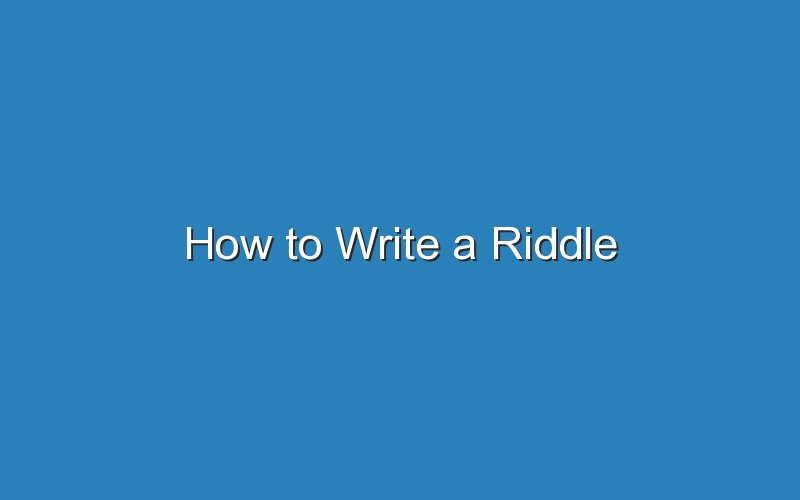Knowing how to write a riddle isn’t always easy, but with a little practice, you can craft a great riddle in no time. The first step in creating a riddle is to decide how long it should be. Ideally, it should be as short as possible, but if you’re feeling ambitious, you can extend it as long as you need to.
A good riddle should have no more than five lines, and should be easy to remember. It should rhyme, but it’s not necessary. Once you know your answer, you can form the question. The key to creating a good riddle is to avoid confusing words. Make it a point to avoid using complex words, and avoid rhyming or spelling mistakes. Once you’ve mastered this step, you’re ready to move onto forming a challenging riddle.
Riddles are generally shorter, and a general topic is best. But if you’re looking for something more challenging, try writing a riddle about ice age eras or dinosaurs. For an interesting riddle, try to make it more than two lines. Some riddles are simply two phrases, while others end up being stories. For those that require more explanation, consider rewriting the riddle until you’ve come up with a final version.
Riddles should be short. You should have five or more lines. A good riddle should also be simple to remember. For example, a sponge is wet, has six sides, and is holey. A clever one can point to the answer without making it obvious. Play on words, metaphors, and rhymes are excellent ways to make a riddle more interesting and memorable. Before rewriting, read it out loud and rewrite it until it is just right.
Another important thing to remember is how to write a riddle. If you want to write a riddle for children, you should use metaphors and idioms to make it sound witty and easy to understand. If you don’t have any idea what to write about, a simple idea is a good starting point. If it isn’t, you can use a phrase, or simply make a word that rhymes with the rest of the sentence.
When writing a riddle, it is important to keep the subject in mind. A riddle has a topic that is related to the subject. For example, a sponge is a good subject for a riddle. If a sponge is a sponge, it’s holey. It’s not a good idea to have an airplane or a bird in a riddle.
The first step in writing a riddle is to start with an object that people can identify with. A simple object, such as a campfire, is a great subject for a riddle. You can use the object to describe the object. A sponge, for example, has six sides, but is wet. Then you can use a phrase to explain the answer to a riddle.
Another step in writing a riddle is to choose an object that represents the answer. To make it more interesting, choose an object that is a familiar to you. A sponge is a good subject for a riddle, but you don’t need to make it about yourself. Instead, you can use the object to provide a clue to the answer. Once you’ve chosen an object, you can write a riddle based on it.
If you’re looking for ways to engage children in writing a riddle, you can start by reading a few riddles that have similar meanings to your own. Then, you can talk about the different clues that lead to the answer. If your child is young, you may want to choose an item that is easy to describe in a simple way. For older children and teens, abstract objects can be a good choice.
Next, you should decide the subject matter of the riddle. A good riddle can be about just about anything, and they can be in any form. As long as the topic is interesting, the most important step is to find the right way to tell the riddle. Often, a riddle can be as simple as a picture or as complex as an object, so the subject matters are up to you.

